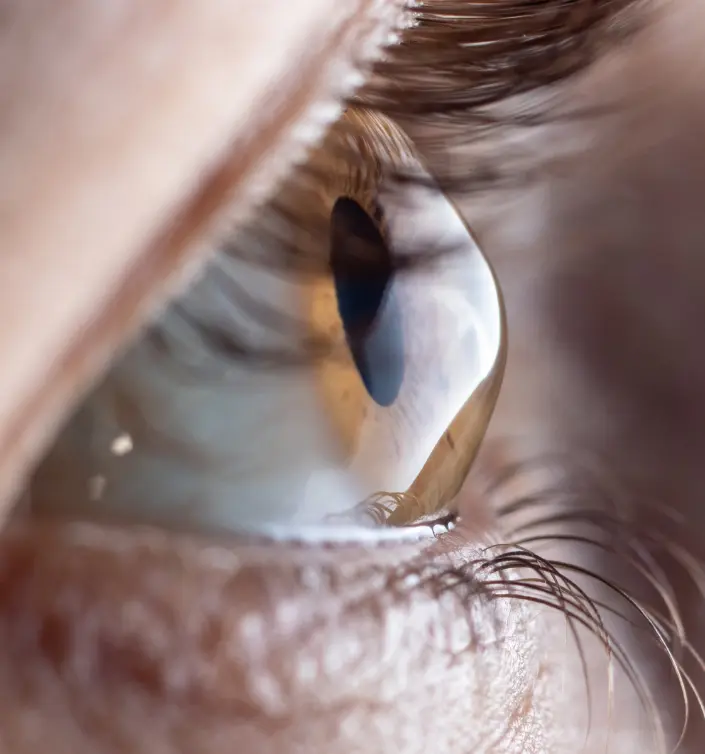
Understanding and Managing Corneal Irregularity
Welcome to Al-Munir Center where we provide valuable information about various eye conditions, including Keratoconus, which can be associated with diabetes. Our dedicated team of ophthalmologists is committed to providing expert care and support for individuals facing corneal irregularity, helping them achieve optimal visual health and clarity.
What is Keratoconus?
Keratoconus is a progressive eye condition characterized by the thinning and bulging of the cornea into a cone-like shape. This corneal irregularity causes distorted vision and astigmatism.
Who is at risk of developing Keratoconus?
While the exact cause of Keratoconus is not fully understood, certain factors may increase the risk, including family history, genetics, frequent eye rubbing, and certain medical conditions, such as allergies and Down syndrome.
What are the common symptoms of Keratoconus?
Symptoms often start in the late teens to early 20s and may include blurred or distorted vision, increased sensitivity to light (photophobia), frequent changes in eyeglass prescriptions, and seeing halos around lights.
Can Keratoconus affect both eyes?
Yes, Keratoconus can affect one or both eyes, but the severity may differ between eyes. Regular eye examinations are crucial to monitor and manage the condition in both eyes.
How is Keratoconus diagnosed?
Diagnosis involves a comprehensive eye examination, including corneal topography or tomography to map the corneal curvature and thickness. Pachymetry may be used to measure corneal thickness.
How Can Al-Munir Center Help?
At Al-Munir Center for Ophthalmology, we specialize in diagnosing and treating Keratoconus. Our team offers personalized treatment plans tailored to each patient’s unique needs, ensuring the best possible outcomes for improved corneal health and visual acuity.
Don't wait........
schedule your eye care Appointment today!
Our Happy Clients
Posted onTrustindex verifies that the original source of the review is Google. والله مركز رائع وكادر ممتاز شكرا الكم والله بتجننو كتعامل عملت عندكم ليزر والعملية كانت سهله جداا وما شاء الله النظر حتى افضل من النظارات بكتيير ❤️❤️❤️🫶🏻Posted onTrustindex verifies that the original source of the review is Google. عملت عندكم عملية ليزك من اقل من شهر و الحمدلله كانت يسرة و حاليا بشوف كتير احسن من اول و تعاملكم لطيف و الدكتور رائع شكراPosted onTrustindex verifies that the original source of the review is Google. Eye specialist center One of the best Good doctors and stuff Modern machines and technology Acceptable pricesPosted onTrustindex verifies that the original source of the review is Google. اسوء عياده همهم ياخذو اكبر عدد من المرضى ولا يمشو الناس بسرعه والدكاتره ياخذو بريك والناس ملطوعه اكثر من ساعتين واحنا ننتظر دورنا وفي الاخير الكشفيه غلط النظاره صرفناها من نفس العياده وطلعت النتيجه سيئه ولا حق اللطعه الدكتوره بعد طول انتظار لما صرنا بنمشي نادوها من البريك منتهى الاستهتارPosted onTrustindex verifies that the original source of the review is Google. Wonderful experience with Almunir center . Dr Munir was a wonderful surgeon, and the staff was always helpful and kind. They ensured I had a smooth prep, surgery, and follow-up. I am so glad I chose Almunir center and would highly recommend to anyone. 🌷🌷Posted onTrustindex verifies that the original source of the review is Google. مركز وطاقم ولا اروع تجربه جدا جميله بتمنى لو عملتها من زمان 💜💜Posted onTrustindex verifies that the original source of the review is Google. ما شاء الله مركز مريح كادر ممتاز بنصح الجميع فيهم بلا تردد 💙💙Posted onTrustindex verifies that the original source of the review is Google. كادر طبي رائع ما شاء الله عليهم خدمات اكتر من ممتازة بعون الله دائمآ للامام ما قصرتوPosted onTrustindex verifies that the original source of the review is Google. تجربة جميلة وأنصح الجميع في زيارة مركز المنير للعيون